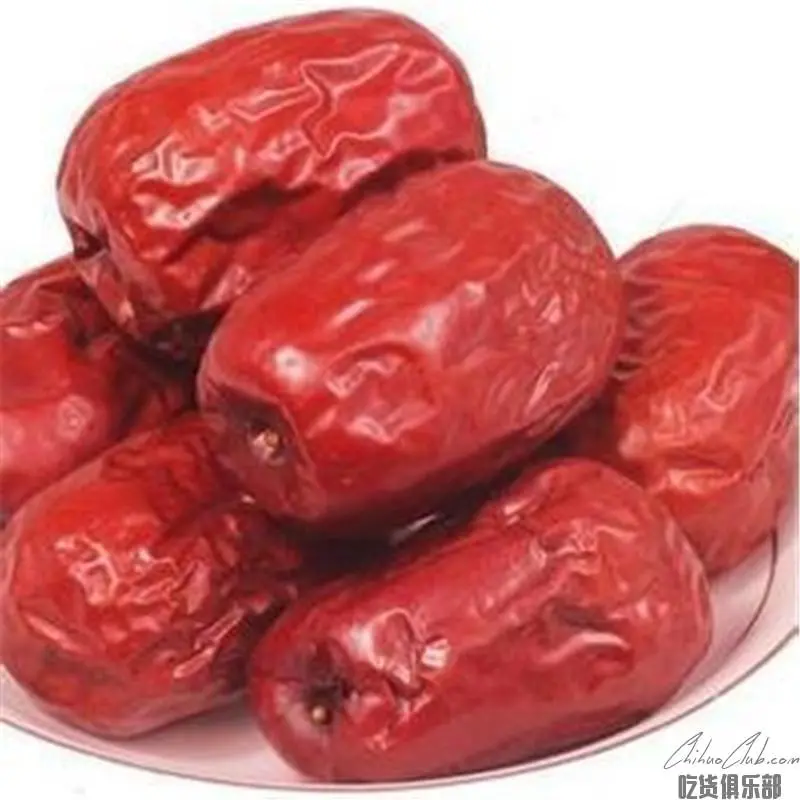
Qingjian red dates
-
Update date::
-
Date of protection::
-
Protected range:The protection scope of Qingyin jujube GI products is the administrative area under the jurisdiction of Qingyi County, Shaanxi Province.
-
Category:
Qingyi County is part of the origin of the world red jujube, and it is also one of the key jujube counties in China. It has a history of more than 3,000 years of jujube cultivation. Due to its unique natural, geographical and climatic conditions, the red dates are large, small, thin, fleshy, sweet and refreshing. It has a unique flavor and is rich in various nutrients such as Vc. It is a good medicinal and tonic. . In particular, Fangmuzao and Changmuzao are known as the “Queens” of the Chinese jujube group. In 1995, Qingyi County was awarded the “Hometown of Chinese Red Dates” by the First National Committee of the National Agricultural Association. At present, Qingyan red dates are sold well in major cities across the country and exported to the United States, Japan and Southeast Asia. The market share accounts for about 30% of the market for dried products.
The relationship between the quality characteristics of Qingzao jujube and the production area (I) Soil characteristics The main planting area of Qingyan red dates is the soil and stone mountain area in the eastern part of the county represented by the banks of the Yellow River and the Wuding River. The soil is loess, black loess, sandy loam, The silt is mainly composed of soil thickness of 30-40 mm, organic matter content of 0.4387%, total nitrogen of 0.039%, total phosphorus of 0.119%, and pH of 7.5-8.0. The growth of jujube trees requires that the soil has a good agglomerate structure, and the gas permeability is good. The micro-acid soil is the best, and the neutral soil can also be cultivated. The main planting area of Qingyan red dates is close to the Yellow River and Wuding River. The soil is fertile and rich in trace elements. At the same time, the soil in this area contains sand grains. The soil is loose and breathable, and the microorganisms are active. Therefore, the roots of jujube trees are developed, the plants are robust, and the results are numerous. Large, high yield and excellent quality make this area the best production base for high quality red dates. (II) Characteristics of light and heat resources Qinglan is a warm temperate semi-arid climate zone with annual sunshine hours of 2722.9 hours, sunshine percentage of 61% and annual radiation of 142.2 kW/cm2. The annual average temperature is 9.6 °C, the coldest (January) average temperature is -12.6 °C, the hottest (July) average temperature is 29.7 °C, the extreme maximum temperature is 38.1 °C, and the extreme minimum temperature is -22.6 °C. The average early frost started on October 8, the night frost was finally on April 13, and the frost-free period was 177 days. Jujube trees are highly photogenic and their colleagues are particularly sensitive to temperature reactions during the growing season. The climatic conditions suitable for jujube growth and development are annual average temperature 8.5-10.1 °C, January average temperature -7.1-13 °C, July average temperature 24.1-30 °C, absolute maximum temperature 37.1-38.9 °C, absolute minimum temperature -19.6- At -28 °C, the annual sunshine hours are 2608-2962 hours, and the annual frost-free period is 170-186 days. Therefore, the climatic conditions of Qingyi are very suitable for the growth and development of jujube trees, sufficient sunshine, sufficient photosynthesis, strong green leaves, strong carbon assimilation, and accumulation of dry matter. Jujube fruit tastes sweet and fruity, and is well received at home and abroad. The majority of consumers favor.
Technical requirements for quality of Qingyan jujube (1) Variety. Traditional local varieties of jujube. (2) Site conditions. Within the protected area, the altitude is 570m to 1000m, the soil type is loess, black loess, and the texture is sandy loam. The soil layer thickness is ≥40cm, the soil organic matter content is ≥0.70%, and the soil pH is 7.5 to 8.0. (3) Cultivation management. 1. Seedling breeding: seedlings are cultivated by means of blasphemy and grafting. 2. Planting time and density: Planting time is in mid-April in spring and in late October in autumn, planting density per hectare is ≤1320. 3. Fertilization: mainly based on manure and organic fertilizer. In the autumn, after harvesting jujube to the deciduous, the fruit of the tree in the fruiting period is ≥50kg per farm. 4. Environmental and safety requirements: The use of pesticides, fertilizers, etc. must comply with relevant national regulations and must not pollute the environment. (4) Harvesting. Harvested in mid-October, the fruit contains ≥70% sugar. It is forbidden to use ripening and driers during harvesting. (5) Processing. Grading→Cleaning→Steam drying or natural drying. (6) Quality characteristics. 1. Sensory characteristics: long round, single fruit weight 4.5g to 10g, peel skin slightly wrinkled, brown red, small nuclear thick, dense texture, long wire drawing. 2. Physical and chemical indicators: project index edible rate (by mass)%≥90 sugar content (in edible part dry matter)%≥70 acid content (in edible part dry matter)%≥1.4 vitamin C (mg/kg ) ≥ 120% of water ≤ 253. Safety requirements: Product safety indicators must meet the relevant regulations of the state for similar products
Apply to:
Producers within the scope of protection of Qingyin jujube GI products may apply to the Qingyi County Quality and Technical Supervision Bureau of Shaanxi Province for the use of the \"Special Mark for Geographical Indication Products\", which is approved by the General Administration of Quality Supervision, Inspection and Quarantine.